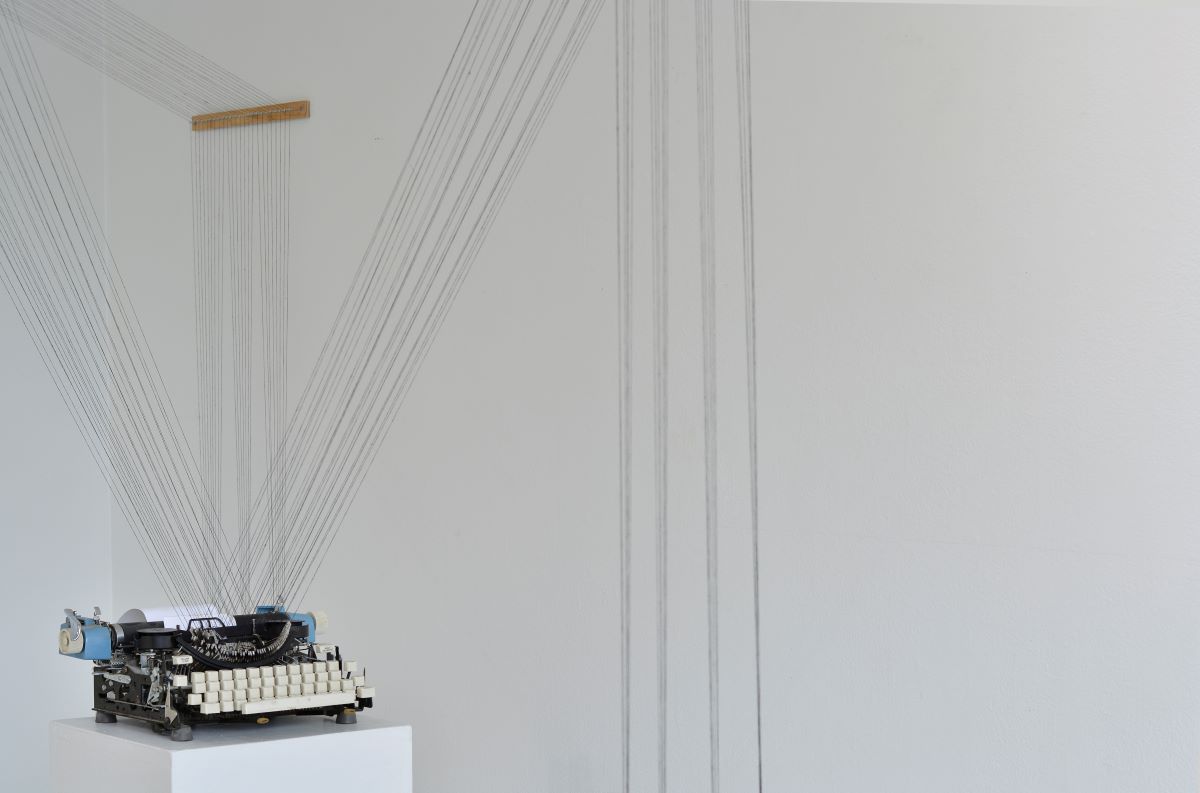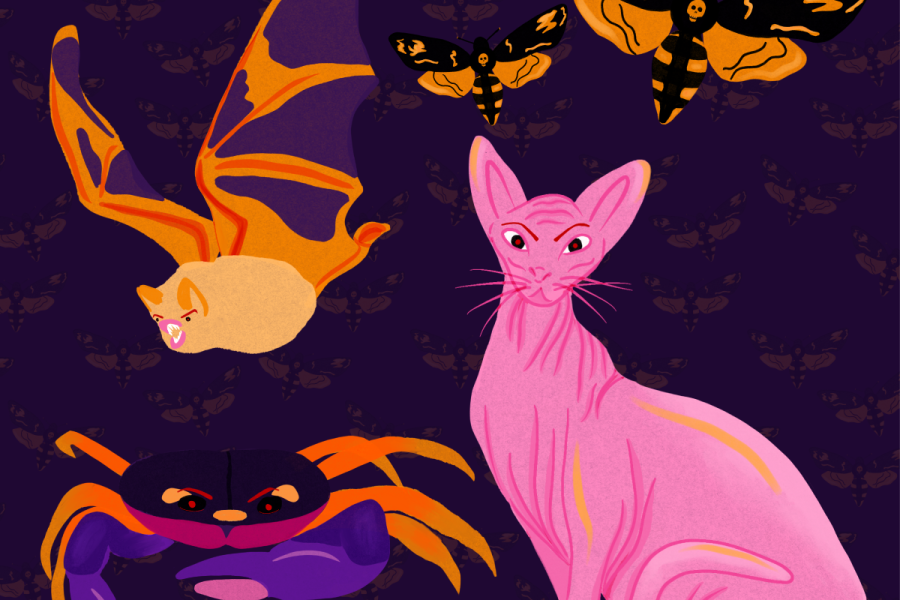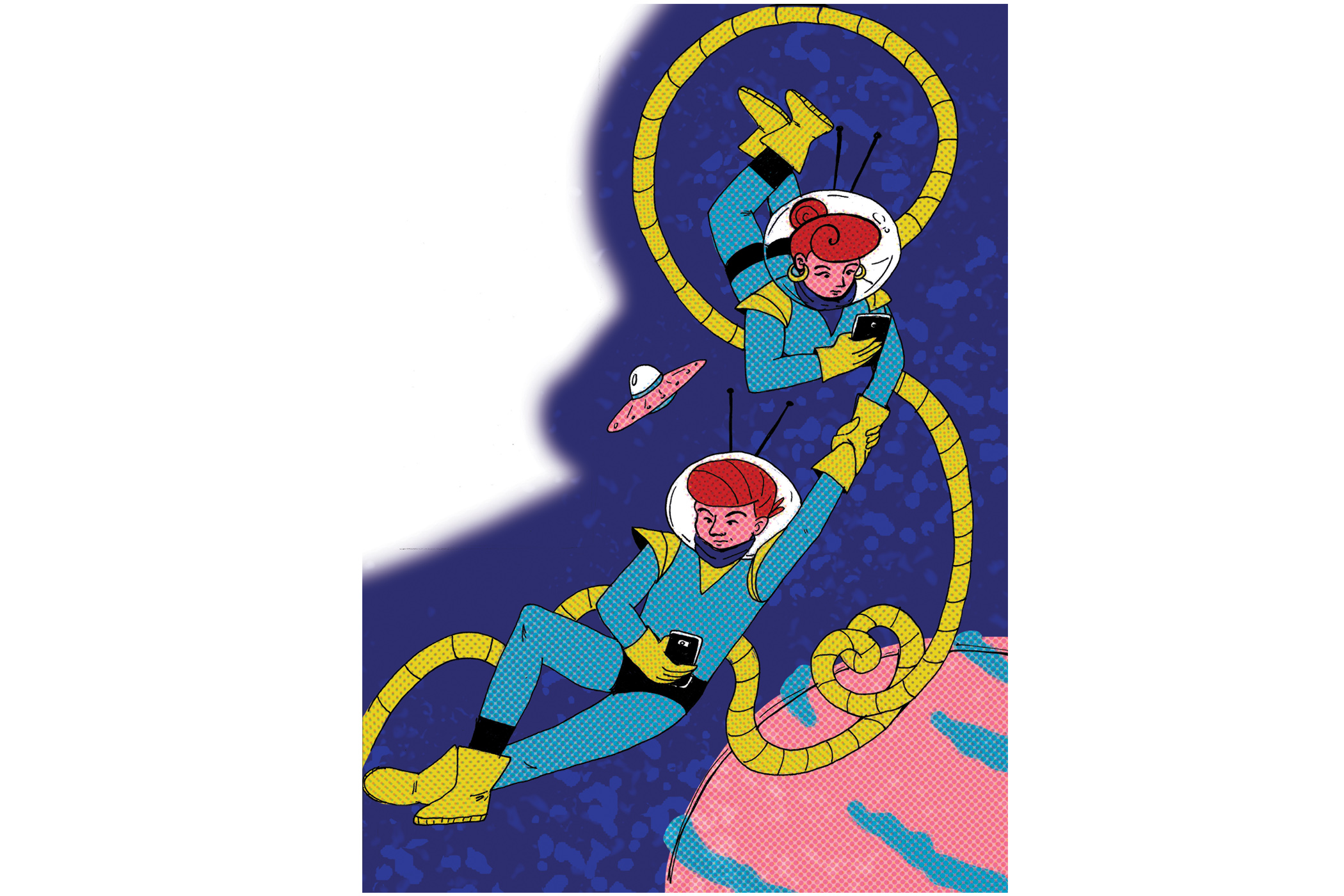Pablo Cazares creates from the in-between. He describes his works as expressions of transience—of identity, of place, of profession. The artist defines himself at these intersections.
“As a mixed-race artist and a trans artist and a neurodiverse artist, I feel like the biggest point of identity that I have is being in between identities,” Cazares said.
Cazares holds a bachelor of science in art practice from Portland State and currently resides in Portland, but his story begins with movement.
“I moved between farmland areas of California and the swampy areas of Texas back and forth over a dozen times in my childhood,” Cazares said. “So I was very grounded in agriculture and in the highways, but not very grounded in a literal place.”
Creative since childhood, he would eventually come to study and work in fashion design. Although, “I wasn’t really giving my creative work it’s due I think, and while I was doing that, I would go home and I would build these strange little machines,” Cazares said.
“I built a loom one weekend, because I was bored,” Cazares said. “And I built some hurdy gurdies… I was just compulsively building all of these strange little devices and machines. And it wasn’t until fairly recently, a couple years ago, that I realized that it was art the whole time.”
Cazares’ recent solo show—We are our own Weavers in MK Gallery on campus—showcased some of the artist’s intricate machines and sculptures.
“I’ve been working with this metaphor that we create the fabric of our own reality,” Cazares said in reference to the show’s title. “Good things happen, bad things happen, and instead of being a victim of our circumstances, [what’s important is] empowering ourselves to decide how we weave that narrative.”

One sculpture within the show titled “Memory Organ 01 (Stranded)” is made from wool, wire, twine and plastic materials. While these inner materials are discernible, the overall piece resembles a human heart. “It’s packaged in plastic wrap,” Cazares said. “You can see it. It’s not hidden. It’s still very visible.”
The key word in this piece is compartmentalization—a mental process of separating incompatible thoughts and feelings. “[It’s] where something happens to us—or we get new information—and we can’t deal with it right now, so we need to package it up and put it away somewhere until we can deal with it,” Cazares said.
“I think a lot of the time when people have something that they’ve compartmentalized, or they’re trying to push away from themselves, it’s almost more visible because they’re pushing it away so clearly,” Cazares said. “I think it’s important to be aware of what ideas and what parts of ourselves that we’re pushing away.”
Outside of this show, Cazares is active in the Portland art community. He is the creator of The t4t art Collective—transgender art for transgender eyes—which hosts events, art shows and monthly figure-drawing sessions for and by trans people.
“It’s an opportunity for trans people to render ourselves in art, by our own hand,” Cazares said. “Disenfranchised communities have to do a lot of work to undo the renderings that have been done of them in the past… We have an opportunity to create ourselves in our own image right now in fine art and so creating a space for that I think is so vital.”
“We get a chance to first have a quiet, kind of self-reflective community experience,” Cazares said. “A lot of queer events are these big bombastic parties, which can be really fun, but also if you’re introverted or if you don’t feel safe or if you just want a chance to have a quiet conversation, it doesn’t really provide that sort of experience.”
Currently, Cazares plans for a future in graduate school. “I’m looking specifically at fully funded MFA programs, which exist,” Cazares said. “As a first generation student, I didn’t know that was a thing.”
Wherever he finds himself, Cazares explained how art provides a grounding force of identity and self-expression. “When you’re between a lot of things, you have to create your own version of home,” Cazares said. “You have to create your own language, a little bit. So I think that’s what I’m doing.”






